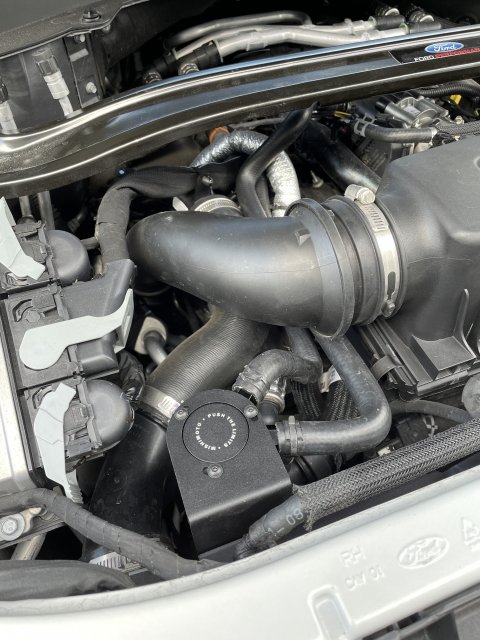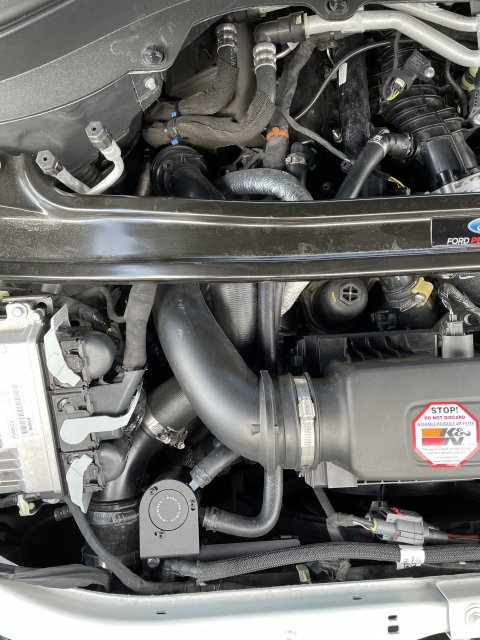Hey Guys!
Nick here from Mishimoto! I know there's been some talk about catch cans around here and I just wanted to drop some info about our kit in here, straight from the source! Make sure you check out our full development process on our Engineering Blog
SOUL TRANSPLANT – 2020+ FORD EXPLORER ST BAFFLED OIL CATCH CAN R&D


Also if you're already on the hunt for a catch can kit for your Explorer, our kit is on presale right now! Make sure that you hurry, though since this introductory price will only be around for a limited time:
BAFFLED OIL CATCH CAN KIT, FITS FORD EXPLORER ST 2020+

Don't hesitate to reach out with any questions that you might have!
-Nick
Nick here from Mishimoto! I know there's been some talk about catch cans around here and I just wanted to drop some info about our kit in here, straight from the source! Make sure you check out our full development process on our Engineering Blog
SOUL TRANSPLANT – 2020+ FORD EXPLORER ST BAFFLED OIL CATCH CAN R&D


The news of the departing Ford hatchbacks left a hole in many enthusiast’s hearts. For us here in the States, that means no more compact speed demons, finished with bulging bucket seats and manual gearboxes. The balance of power and practicality bearing the blue oval is gone. Or is it?
Enter the Explorer ST. Ford didn’t delete the ST line. They just matured it a bit and crammed the essence of a hot hatchback into a full-sized, family-friendly SUV. It’s a combination that shouldn’t work, but the 400 hp and surprisingly nimble handling is sure to fill the void left by the hot-hatches departure.
No matter the vehicle segment, however, any and all internal combustion engines suffer from the same nasty side-effect – blow-by, Explorer ST included. To put it simply, blow-by is when oil and fuel droplets are mixed in with recycled crankcase pressure. Some combustion gasses make their way past the piston rings during the power stroke and pressurize the crankcase. In the olden days, this pressure was relieved by venting to the atmosphere, which spewed harmful emissions, not to mention slick oil on the roads. Now, though, this pressure is routed and recycled through the intake via the positive crankcase ventilation (PCV) system, fuel, and oil, and all. The blow-by mixture will collect on the engine’s intake components, specifically the intake valves, resulting in sticky carbon buildup, which detracts from the sport part of your sport utility vehicle. For a more in-depth look at blow-by, make sure you check out our full tech article: Blow-By 101: What is Blow-By and How to Keep it from Ruining your Engine
Enter the Explorer ST. Ford didn’t delete the ST line. They just matured it a bit and crammed the essence of a hot hatchback into a full-sized, family-friendly SUV. It’s a combination that shouldn’t work, but the 400 hp and surprisingly nimble handling is sure to fill the void left by the hot-hatches departure.
No matter the vehicle segment, however, any and all internal combustion engines suffer from the same nasty side-effect – blow-by, Explorer ST included. To put it simply, blow-by is when oil and fuel droplets are mixed in with recycled crankcase pressure. Some combustion gasses make their way past the piston rings during the power stroke and pressurize the crankcase. In the olden days, this pressure was relieved by venting to the atmosphere, which spewed harmful emissions, not to mention slick oil on the roads. Now, though, this pressure is routed and recycled through the intake via the positive crankcase ventilation (PCV) system, fuel, and oil, and all. The blow-by mixture will collect on the engine’s intake components, specifically the intake valves, resulting in sticky carbon buildup, which detracts from the sport part of your sport utility vehicle. For a more in-depth look at blow-by, make sure you check out our full tech article: Blow-By 101: What is Blow-By and How to Keep it from Ruining your Engine
BAFFLED OIL CATCH CAN KIT, FITS FORD EXPLORER ST 2020+

Don't hesitate to reach out with any questions that you might have!
-Nick
Last edited:



